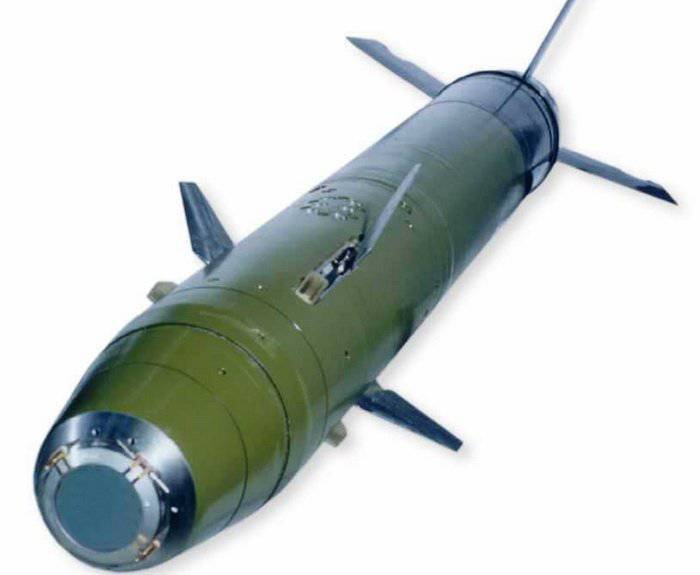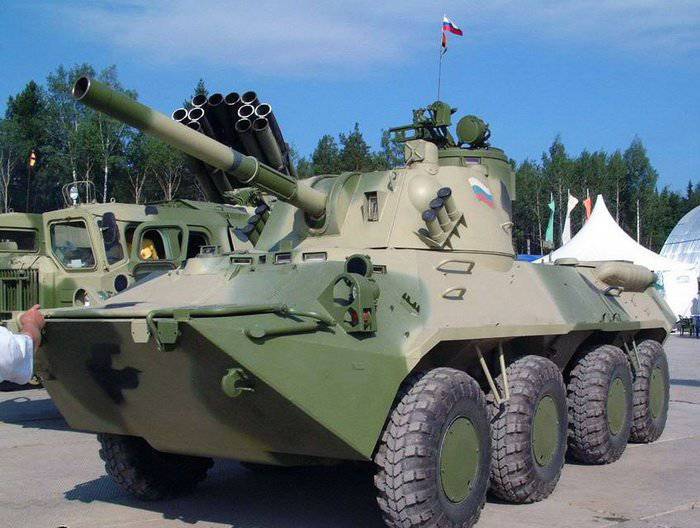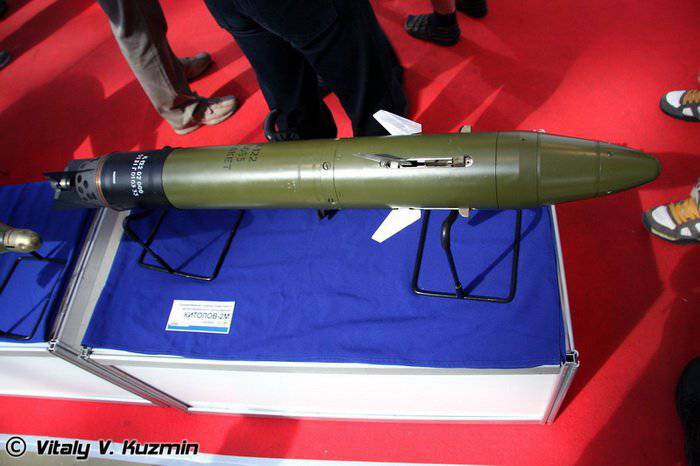Guided ammunition "Kitolov-2" and "Kitolov-2M"
Combat firing was carried out with the involvement of self-propelled guns from the Tula and Ivanovo airborne units of the Russian Airborne Forces. It is noteworthy that the firing of Kitolov-2 high-precision artillery shells was controlled by the new Reostat-1 reconnaissance and fire control points. During the combat firing, the self-propelled guns constantly changed their firing positions, the military had already recognized these training firing as successful.
The Kitolov-2 guided artillery armament complex was created in the world-famous Tula Instrument Design Bureau (KBP). This complex includes 120-mm shells "Kitolov-2" for ACS 2S9 "Nona" and 2S23 "Nona-SVK", as well as 122-mm shells "Kitolov-2M", which can be used by ACS 2S1 "Gvozdika" and towed D-30 howitzers (they will be removed from service by the end of 2013).

The Kitolov guided weapon system includes an adjustable high-explosive fragmentation projectile with a passive homing head, which receives the reflected signal from the target illumination by a laser designator-rangefinder. This ammunition is designed to destroy engineering structures and armored targets with one shot. The projectile is controlled on the trajectory of its flight using aerodynamic rudders equipped with a special drive powered by the energy of the incoming air currents. In addition to artillery shells, there is a 120-mm version of the ammunition in the form of the KM-8 "Gran" mine. Homing heads for Kitrolov-2 ammunition are manufactured by Lomo OJSC. The Kitolov-2 high-precision guided projectile was put into service in 2002.
The Kitolov-2 guided weapon system ensures the destruction of stationary and moving lightly armored targets and engineering structures of the enemy from one shot without zeroing in. The ammunition is designed to equip artillery units of battalion artillery and airborne forces. "Kitolov-2" can be used to destroy targets at a distance of 1,5 to 9 km, with a probability of 0,8 - on a moving target and 0,9 - on a stationary target. The mass of the projectile is 26,2 ± 0,5 kg, it carries a high-explosive fragmentation warhead, which is equipped with an explosive charge of 5,2-5,3 kg. The projectile has plumage and rudders that can be deployed in flight, and is also equipped with a sustainer engine. The main limitation on the use of this type of projectile is the smoke on the battlefield and the height of the cloud cover above the ground. For this reason, Kitolov-2 guided ammunition is not fired at the maximum elevation angles of the gun; it is also recommended to use guided projectiles of this type at the very beginning of target firing.
To use artillery high-precision ammunition "Kitolov-2", the 2S9 ACS was modernized. In particular, 2 additional ammunition pads were installed on the floor of the middle compartment, a shot synchronization equipment was mounted, which includes a shot sensor, which gives a signal about the moment the projectile leaves the gun barrel through a radio station to the control and reconnaissance point.

Also, the reconnaissance and fire control point "Rheostat-1" 1В119-1, created on the basis of the BTR-D, has undergone changes. The 1V119-1 machine was equipped with a 1D22 laser rangefinder-target designator (created by the Moscow Research Institute "Polyus"), and changes were also made to the onboard computer software of the machine. "Rheostat-1", along with reconnaissance, also provides automated determination of the coordinates of targets and explosions of its own shells both in the daytime and at night, monitors the battlefield, zeroing in targets, firing corrected ammunition and evaluating the results of firing. The range of effective "illumination" of targets with a laser beam, the so-called laser target designation, is from 300 to 7 meters. The range of measuring the distance to targets is from 000 to 120 meters, while the measurement error does not exceed 20 meters.
More powerful ammunition used by ACS 2S1 "Carnation" is the guided 122-mm projectile "Kitolov-2M". The maximum firing range of the Kitolov-2M high-explosive fragmentation projectile is 13,5 km. The length of the projectile is 1190 mm, the mass is 28 kg, of which the warhead is 12,25 kg, the mass of the explosive is 5,3 kg. The probability of hitting targets is not less than 0,8. This projectile is well suited for hitting both single and group targets, moving and stationary, unarmored and armored, as well as various engineering structures of the enemy.
In combat use, the Kitolov-2M guided weapon system provides: direct hitting the target without zeroing in with the first shot; the defeat of dispersed and group targets on a single firing set; hitting armored targets from above into the least protected, and therefore the most vulnerable projection; firing with reduced meteorological ballistic training; firing "burst" (methodical fire) up to 3 rounds per minute with an interval of 20-25 seconds between shots and with the re-aiming of the laser designator at neighboring targets in free intervals between illumination cycles.

The most characteristic targets for the Kitolov-2M high-precision complex are:
- positions of enemy mortars, artillery and MLRS;
- BMP, armored personnel carriers, and self-propelled guns of the enemy;
- dugouts and timber-earth firing structures;
- crossings and bridges;
- transport and landing ships and boats.
The main advantages of "Kitolov-2M": unlike ordinary artillery shells of the same caliber, which are effective only when firing in areas, "Kitolov-2M" allows you to hit specific single targets, firing from closed firing positions without preliminary zeroing. The complex is able to ensure the defeat of moving targets if their speed does not exceed 40 km / h. Thanks to the use of a semi-active laser homing head on the target and a sufficiently powerful high-explosive fragmentation warhead, it is guaranteed that various types of targets are hit, including those located both openly and in trenches, as well as armored targets. These shells do not require special storage and maintenance conditions.
The use of a high-precision complex in the troops weapons Kitolov-2 significantly increases the effectiveness of battalion artillery. Firstly, this is achieved due to the direct defeat of the target by guided ammunition and the greater power of its warhead in comparison with standard high-explosive fragmentation ammunition, and secondly, due to the ability to fight even with enemy armored vehicles, including those in motion.
Information sources:
- http://old.redstar.ru/2007/01/24_01/2_02.html
- http://desantura.ru/articles/35/?PAGEN_1=11
- http://www.kbptula.ru/index.php?option=com_content&view=article&id=88&Itemid=418〈=ru#spoiler_0
- http://lenta.ru/news/2013/03/22/kitolov
- http://lenta.ru/news/2013/03/22/kitolov
Information